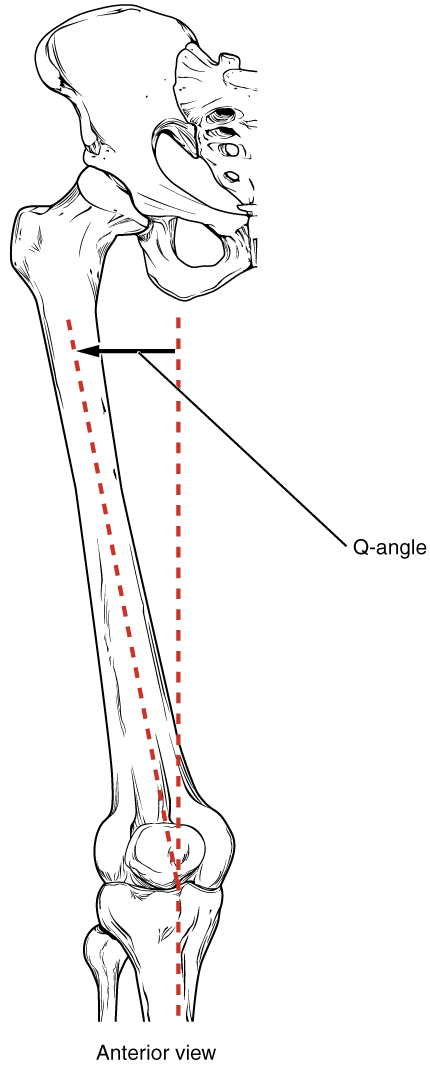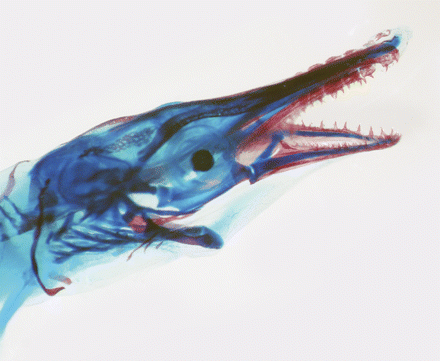|
Epiphysiodesis
Epiphysiodesis is a pediatric orthopedic surgery procedure that aims at altering or stopping the bone growth naturally occurring through the growth plate also known as the physeal plate. There are two types of epiphysiodesis: temporary hemiepiphysiodesis and permanent epiphysiodesis. Temporary hemiepiphysiodesis is also known as guided growth surgery or growth modulation surgery. Temporary hemiepiphysiodesis is reversible i.e. the metal implants used to achieve epiphysiodesis can be removed after the desired correction is achieved and the growth plate can thus resume its normal growth and function. In contrast, permanent epiphysiodesis is irreversible and the growth plate function cannot be restored after surgery. Both temporary hemiepiphysiodesis and permanent epiphysiodesis are used to treat a diverse array of pediatric orthopedic disorders but the exact indications for each procedure are different. Guided growth temporary hemiepiphysiodesis Temporary hemiepiphysiodesis is ... [...More Info...] [...Related Items...] OR: [Wikipedia] [Google] [Baidu] |
Blount's Disease
Blount's disease (or Blount disease) is a growth disorder of the tibia (shin bone) which causes the lower leg to angle inward, resembling a bowleg. It is also known as "tibia vara". Signs and symptoms Cause Blount disease is a growth disorder of the shin bone which causes the lower leg to angle inward, resembling a bowleg. It can present in boys under 4-years in both legs, or in adolescents usually on one side. Causes are thought to be genetic and environmental, like obesity, African-American lineage, and early walkers.Dakshina Murthy T S. S; Alessandro De LeucioBlount Disease Treasure Island (FL): StatPearls Publishing; 2022 January. Diagnosis Differential diagnosis Lower extremity deformities in rickets can closely mimic those produced by Blount's disease. To differentiate between rickets and Blount's disease it is important to correlate the clinical picture with laboratory findings such as calcium, phosphorus and alkaline phosphatase. Besides the X-ray appearance. Bone defor ... [...More Info...] [...Related Items...] OR: [Wikipedia] [Google] [Baidu] |
Growth Plate
The epiphyseal plate, epiphysial plate, physis, or growth plate is a hyaline cartilage plate in the metaphysis at each end of a long bone. It is the part of a long bone where new bone growth takes place; that is, the whole bone is alive, with maintenance remodeling throughout its existing bone tissue, but the growth plate is the place where the long bone grows longer (adds length). The plate is only found in children and adolescents; in adults, who have stopped growing, the plate is replaced by an '' epiphyseal line''. This replacement is known as epiphyseal closure or growth plate fusion. Complete fusion can occur as early as 12 for girls (with the most common being 14–15 years for girls) and as early as 14 for boys (with the most common being 15–17 years for boys). Structure Development Endochondral ossification is responsible for the initial bone development from cartilage in utero and infants and the longitudinal growth of long bones in the epiphyseal plate. The plate ... [...More Info...] [...Related Items...] OR: [Wikipedia] [Google] [Baidu] |
Genu Valgum
Genu valgum, commonly called "knock-knee", is a condition in which the knees angle in and touch each other when the human leg, legs are straightened. Individuals with severe valgus deformity, valgus deformities are typically unable to touch their feet together while simultaneously straightening the legs. The term originates , but is also used to describe the Anatomical terms of location#Proximal and distal, distal portion of the knee joint which bends outwards and thus the Anatomical terms of location#Proximal and distal, proximal portion seems to be bent inwards. Mild genu valgum is diagnosed when a person standing upright with the feet touching also shows the knees touching. It can be seen in children from ages 2 to 5, and is often corrected naturally as children grow. The condition may continue or worsen with age, particularly when it is the result of a disease, such as rickets. Idiopathic genu valgum is a form that is either congenital or has no known cause. Other systemic ... [...More Info...] [...Related Items...] OR: [Wikipedia] [Google] [Baidu] |
Pediatric
Pediatrics (American English) also spelled paediatrics (British English), is the branch of medicine that involves the medical care of infants, children, adolescents, and young adults. In the United Kingdom, pediatrics covers many of their youth until the age of 18. The American Academy of Pediatrics recommends people seek pediatric care through the age of 21, but some pediatric subspecialists continue to care for adults up to 25. Worldwide age limits of pediatrics have been trending upward year after year. A medical doctor who specializes in this area is known as a pediatrician, or paediatrician. The word ''pediatrics'' and its cognates mean "healer of children", derived from the two Greek words: (''pais'' "child") and (''iatros'' "doctor, healer"). Pediatricians work in clinics, research centers, universities, general hospitals and children's hospitals, including those who practice pediatric subspecialties (e.g. neonatology requires resources available in a NICU). History ... [...More Info...] [...Related Items...] OR: [Wikipedia] [Google] [Baidu] |
Orthopedic Surgery
Orthopedic surgery or orthopedics ( alternative spelling orthopaedics) is the branch of surgery concerned with conditions involving the musculoskeletal system. Orthopedic surgeons use both surgical and nonsurgical means to treat musculoskeletal trauma, spine diseases, sports injuries, degenerative diseases, infections, tumors and congenital disorders. Etymology Nicholas Andry coined the word in French as ', derived from the Ancient Greek words ("correct", "straight") and ("child"), and published ''Orthopedie'' (translated as ''Orthopædia: Or the Art of Correcting and Preventing Deformities in Children'') in 1741. The word was assimilated into English as ''orthopædics''; the ligature ''æ'' was common in that era for ''ae'' in Greek- and Latin-based words. As the name implies, the discipline was initially developed with attention to children, but the correction of spinal and bone deformities in all stages of life eventually became the cornerstone of orthopedic pra ... [...More Info...] [...Related Items...] OR: [Wikipedia] [Google] [Baidu] |
Bone Growth
Ossification (also called osteogenesis or bone mineralization) in bone remodeling is the process of laying down new bone material by cells named osteoblasts. It is synonymous with bone tissue formation. There are two processes resulting in the formation of normal, healthy bone tissue: Intramembranous ossification is the direct laying down of bone into the primitive connective tissue (mesenchyme), while endochondral ossification involves cartilage as a precursor. In fracture healing, endochondral osteogenesis is the most commonly occurring process, for example in fractures of long bones treated by plaster of Paris, whereas fractures treated by open reduction and internal fixation with metal plates, screws, pins, rods and nails may heal by intramembranous osteogenesis. Heterotopic ossification is a process resulting in the formation of bone tissue that is often atypical, at an extraskeletal location. Calcification is often confused with ossification. Calcification is synonymou ... [...More Info...] [...Related Items...] OR: [Wikipedia] [Google] [Baidu] |
Implant (medicine)
An implant is a medical device manufactured to replace a missing biological structure, support a damaged biological structure, or enhance an existing biological structure. For example, an implant may be a rod, used to strengthen weak bones. Medical implants are human-made devices, in contrast to a transplant, which is a transplanted biomedical tissue. The surface of implants that contact the body might be made of a biomedical material such as titanium, silicone, or apatite depending on what is the most functional. In 2018, for example, American Elements developed a nickel alloy powder for 3D printing robust, long-lasting, and biocompatible medical implants. In some cases implants contain electronics, e.g. artificial pacemaker and cochlear implants. Some implants are bioactive, such as subcutaneous drug delivery devices in the form of implantable pills or drug-eluting stents. Applications Implants can roughly be categorized into groups by application: Sensory and neu ... [...More Info...] [...Related Items...] OR: [Wikipedia] [Google] [Baidu] |
Indication (medicine)
In medicine, an indication is a valid reason to use a certain test, medication, procedure, or surgery. There can be multiple indications to use a procedure or medication. An indication can commonly be confused with the term diagnosis. A diagnosis is the assessment that a particular medical condition is present while an indication is a reason for use. The opposite of an indication is a contraindication, a reason to withhold a certain medical treatment because the risks of treatment clearly outweigh the benefits. In the United States, indications for prescription drugs are approved by the FDA. Indications are included in the Indications and Usage section of the Prescribing Information. The primary role of this section of labeling is to enable health care practitioners to readily identify appropriate therapies for patients by clearly communicating the drug's approved indication(s). The Indications and Usage section states the disease or condition, or manifestation or symptoms there ... [...More Info...] [...Related Items...] OR: [Wikipedia] [Google] [Baidu] |
Genu Varum
Genu varum (also called bow-leggedness, bandiness, bandy-leg, and tibia vara) is a varus deformity marked by (outward) bowing at the knee, which means that the lower leg is angled inward ( medially) in relation to the thigh's axis, giving the limb overall the appearance of an archer's bow. Usually medial angulation of both lower limb bones ( fibula and tibia) is involved. Causes If a child is sickly, either with rickets or any other ailment that prevents ossification of the bones or is improperly fed, the bowed condition may persist. Thus the chief cause of this deformity is rickets. Skeletal problems, infection, and tumors can also affect the growth of the leg, sometimes giving rise to a one-sided bow-leggedness. The remaining causes are occupational, especially among jockeys, and from physical trauma, the condition being very likely to supervene after accidents involving the condyles of the femur. Childhood Children until the age of 3 to 4 have a degree of genu varum ... [...More Info...] [...Related Items...] OR: [Wikipedia] [Google] [Baidu] |
Rickets
Rickets, scientific nomenclature: rachitis (from Greek , meaning 'in or of the spine'), is a condition that results in weak or soft bones in children and may have either dietary deficiency or genetic causes. Symptoms include bowed legs, stunted growth, bone pain, large forehead, and trouble sleeping. Complications may include bone Deformity, deformities, bone pseudofractures and Bone fracture, fractures, muscle spasms, or an scoliosis, abnormally curved spine. The analogous condition in adults is osteomalacia. The most common cause of rickets is a hypovitaminosis D, vitamin D deficiency, although hereditary genetic forms also exist. This can result from eating a diet without enough vitamin D, dark skin, too little sun exposure, exclusive breastfeeding without vitamin D supplementation, celiac disease, and certain genetic conditions. Other factors may include not enough calcium or phosphorus. The underlying mechanism involves insufficient calcification of the growth plate. Di ... [...More Info...] [...Related Items...] OR: [Wikipedia] [Google] [Baidu] |
Osteochondrodysplasias
An osteochondrodysplasia,Etymology: . or skeletal dysplasia, is a disorder of the development of bone and cartilage. Osteochondrodysplasias are rare diseases. About 1 in 5,000 babies are born with some type of skeletal dysplasia. Nonetheless, if taken collectively, genetic skeletal dysplasias or osteochondrodysplasias comprise a recognizable group of genetically determined disorders with generalized skeletal affection. These disorders lead to disproportionate short stature and bone abnormalities, particularly in the arms, legs, and spine. Skeletal dysplasia can result in marked functional limitation and even mortality. Osteochondrodysplasias or skeletal dysplasia subtypes can overlap in clinical aspects, therefore plain radiography is absolutely necessary to establish an accurate diagnosis. Magnetic resonance imaging can provide further diagnostic insights and guide treatment strategies especially in cases of spinal involvement. As some disorders that cause skeletal dysplasia have ... [...More Info...] [...Related Items...] OR: [Wikipedia] [Google] [Baidu] |







